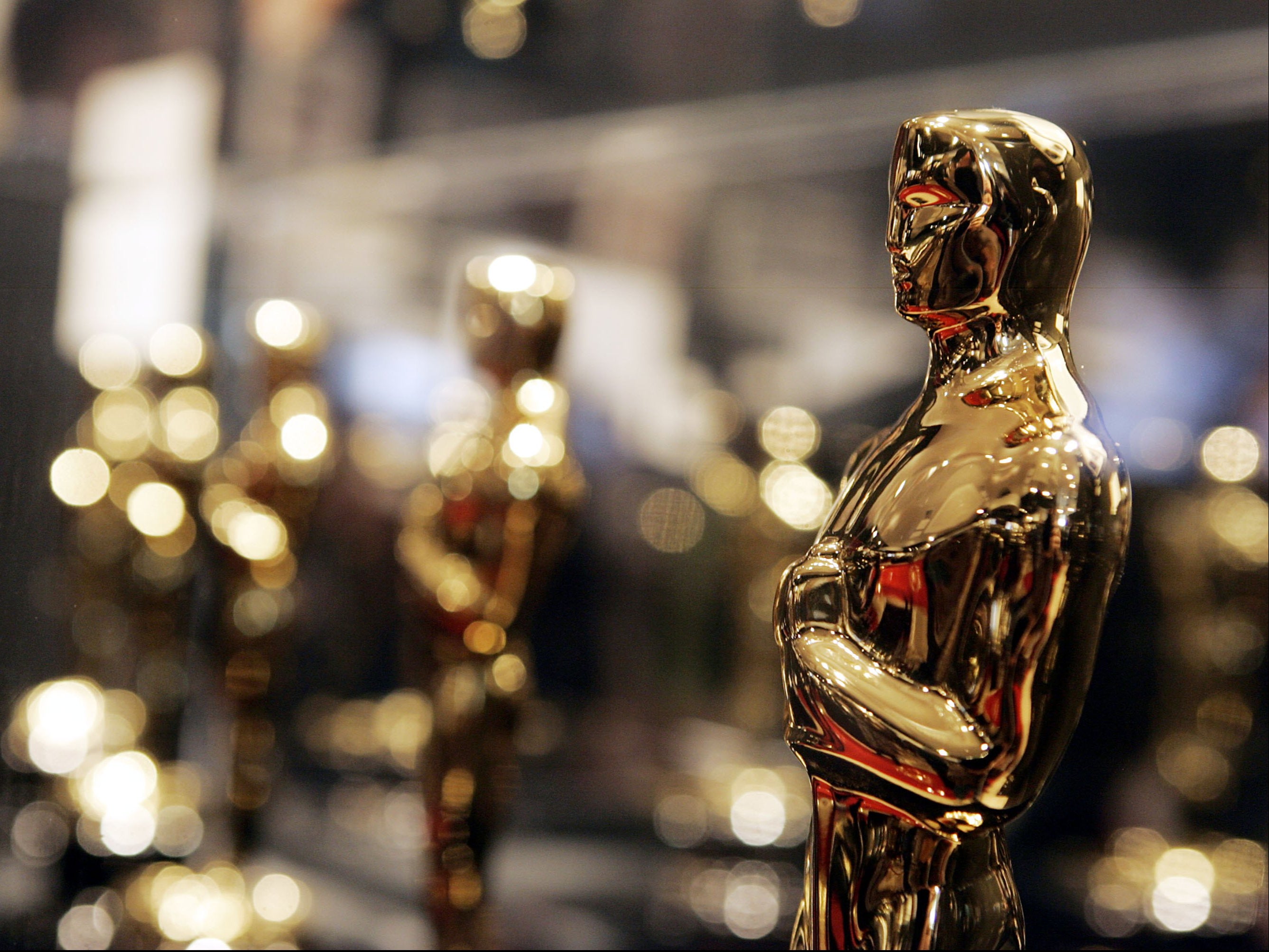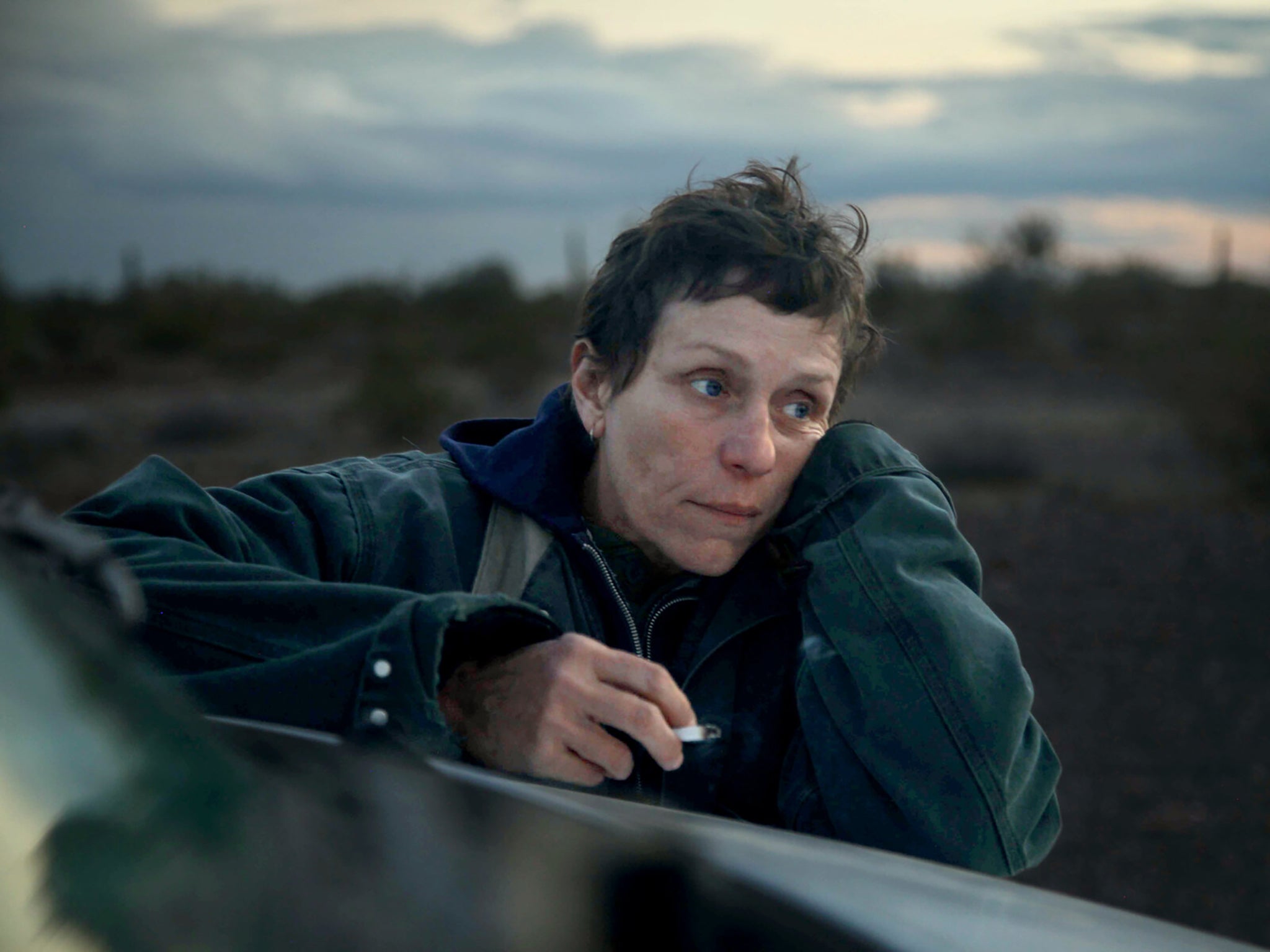‘We all want it to be special’: Will anyone watch the Oscars next week?
Viewing figures for the Academy Awards were already in free fall, but with the pandemic will anyone tune in? Nicole Sperling and Brooks Barnes examine the decline of the Oscars

Your support helps us to tell the story
From reproductive rights to climate change to Big Tech, The Independent is on the ground when the story is developing. Whether it's investigating the financials of Elon Musk's pro-Trump PAC or producing our latest documentary, 'The A Word', which shines a light on the American women fighting for reproductive rights, we know how important it is to parse out the facts from the messaging.
At such a critical moment in US history, we need reporters on the ground. Your donation allows us to keep sending journalists to speak to both sides of the story.
The Independent is trusted by Americans across the entire political spectrum. And unlike many other quality news outlets, we choose not to lock Americans out of our reporting and analysis with paywalls. We believe quality journalism should be available to everyone, paid for by those who can afford it.
Your support makes all the difference.Neither intimate looks into stars’ living rooms nor scantily clad pop stars performing provocative hits have been able to stop audiences from tuning out award shows this year. The ratings for the Grammys were down by 53 per cent. Golden Globes viewership plummeted more than 60 per cent.
Now, as Hollywood prepares for a coronavirus-delayed Academy Awards telecast on 25 April, it is faced with the ultimate doomsday scenario: that the viewing public is ready to toss its premier showcase into the entertainment dustbin, plopped next to variety shows.
At a time when the traditional film industry is fighting for its primacy at the centre of culture – with at-home entertainment soaring in popularity and pandemic-battered cinema chains closing – a collective shrug for the Oscars would send Hollywood deeper into an identity crisis. And a shrug certainly could happen. Guts + Data, a research firm that focuses on entertainment, said last month that only 18 per cent of active film watchers (in cinemas or at home) had heard of Mank, the Netflix film leading the Oscar race with 10 nominations.
“When even I find myself having a hard time caring, that’s a problem,” says Jeanine Basinger, founder of Wesleyan University’s film studies department and author of Hollywood histories such as The Star Machine.
Some people in the entertainment industry, whether out of optimism, denial or both, believe that award shows are simply going through a temporary downturn because of the unique circumstances of the pandemic.
But Nielsen ratings for the Oscars were already in free fall before the pandemic hit, plunging 44 per cent between 2014 and last year, when 23.6 million people watched the South Korean dramatic thriller Parasite win the top prize. An additional drop on a par with the Globes show in February would put the Oscars audience in the catastrophic single-digit millions.
Much more than vanity is at stake. The Academy Awards have long been an economy unto themselves, with companies such as Netflix spending $30m or more to campaign for a single film, and Disney, which owns ABC, committed to paying more than $900m for the worldwide broadcast rights through 2028.
The Academy of Motion Picture Arts and Sciences is not conceding defeat. The organisation, which generates about $90m a year in after-expenses income from the Oscars telecast, has handed the show to one of Hollywood’s most celebrated directors, Steven Soderbergh. He and his fellow producers, Stacey Sher and Jesse Collins, have been tasked with shaking up the telecast while also sticking to tradition (awarding statuettes in 24 categories, including the “boring” technical ones) and complying with pandemic safety restrictions.
It’s the Academy Awards. We all want it to be special, and that doesn’t feel special. It just doesn’t. It reminds us of the pain of the last 14, 15 months
If that wasn’t difficult enough, the three have the additional challenge of attempting to jump-start cinema-going when most of the world is more than a year out of the habit.
“If we can get out at three hours and deliver a show that we see on paper right now, we feel like we will have had a cultural moment where the nation, the world, will say, ‘Yes, I love movies!’” says Collins, a veteran live-events producer who oversaw both this year’s Super Bowl and the Grammys. “That will get us another step back to theatres.”
The three are trying to reinvent the show, yet are hamstrung by Covid-19 safety costs, which alone are taking up one-third of the production budget. The group is also adamant that the show will not take place over Zoom. Soderbergh, who directed the 2011 virus thriller Contagion and headed the Directors Guild return-to-work task force, had that provision written into his contract when he signed on to the project.
“I made it clear that that has to be the absolute worst-case scenario,” Soderbergh says of the ubiquitous pandemic technology. “It’s the Academy Awards. We all want it to be special, and that doesn’t feel special. It just doesn’t. It reminds us of the pain of the last 14, 15 months. Not the joy of cinema or going to the movies.”
In an attempt to make the show more like an exclusive gathering, the producers are stepping into a logistical morass that will aim to get every nominee in front of a television camera at a designated location, whether at two Los Angeles sites – the downtown Union Station and the usual Oscars location, the Dolby Theatre in Hollywood – or one of 20 satellite spots around the world. The largest hub will be in London.

For Soderbergh, the decision to take the job at such a fraught time stems from his long history of complaining about the show. Whether he was in the room as a nominee or at home watching it on television, “the lack of intimacy” always bothered him.
“I didn’t find it a very pleasant experience to be in the audience,” he says of his two visits, one in 1990 as the screenwriter of Sex, Lies and Videotape and again in 2001, when he won best director for Traffic.
Sher, who has attended the Academy Awards four times, remembers being awed at first in 1995, when she was an executive producer of Pulp Fiction and the movie was nominated for seven Oscars.
“When I got out of the car and saw those giant Oscars, it was one of the most mind-blowing moments in my life,” she says. “And it completely went downhill from there.”
This year, the producers want to focus less on winning and instead make sure the notably diverse group of nominees has a better-than-average time by making the event more communal and intimate. They also intend to create a mask-free telecast that reminds audiences at home why they like going to the movies.

Not helping the producers’ cause is the slate of films they are celebrating. Even though the majority of the best picture contenders are available on streaming services, they remain relatively obscure. According to the Guts + Data survey, conducted the week of 21 March, the best-known contender was Judas and the Black Messiah, with 46 per cent awareness. The front-runner, Nomadland, registered only 35 per cent.
Soderbergh acknowledged that there is only so much the producers can do.
“People’s decision-making process on whether to watch or not doesn’t seem to be connected to whether the show is fantastic or not,” he says, pointing to the strong critical response for this year’s Grammys, which notably featured a risqué performance by Megan Thee Stallion and Cardi B.
The Oscars telecast, on the other hand, saw its ratings peak in 1998, when 57.2 million people tuned in to see the box-office juggernaut Titanic sweep to best picture victory. Since the turn of the century, the most highly rated year was 2004, when the academy honoured another box-office behemoth, Lord of the Rings: The Return of the King.

Analysts point to a litany of challenges propelling the decline. Old broadcast networks are not as relevant, especially to young people. The ceremonies, even if kept to a relatively brisk three hours, are too long for contemporary attention spans. Last year’s Oscars ran three hours and 36 minutes (the equivalent of 864 videos on TikTok).
Why slog through the show when you can just watch snippets on Twitter and Instagram?
Moreover, the Oscars have become overly polished and predictable. “The Oscars used to be the only time when you got to see movie stars in your living room, and very frequently it was a hoot,” says Hollywood historian Jeanine Basinger. “Some seemed a little drunk. Some wore weird clothes. A few had hair hanging in their face.”
Increasingly, the ceremonies are less about entertainment honours and more about progressive politics, which inevitably annoys those in the audience who disagree. One recent producer of the Oscars, who spoke on the condition of anonymity to discuss confidential metrics, said minute-by-minute post-show ratings analysis indicated that “vast swaths” of people turned off their televisions when celebrities started to opine on politics.
Read More:
With ratings expected to tumble for the coming telecast, the American TV network, ABC, has been asking for $2m for 30 seconds of advertising time, down about 13 per cent from last year’s starting price. Some loyal advertisers (Verizon) are returning, but others (Ferrero chocolates) are not.
“We’re really not getting much advertiser interest,” says Michelle Chong, planning director at Atlanta-based agency Fitzco, “and it’s not something we’ve been pushing.”
© The New York Times
Join our commenting forum
Join thought-provoking conversations, follow other Independent readers and see their replies
Comments